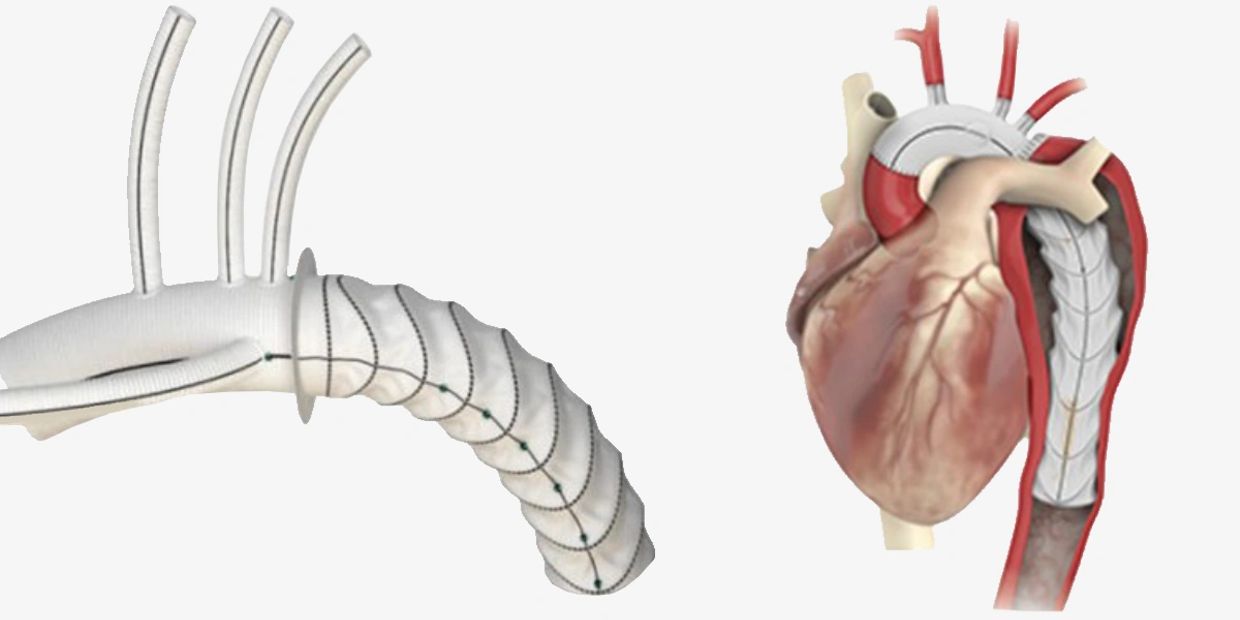Signed in as:
filler@godaddy.com
Signed in as:
filler@godaddy.com

The frozen elephant trunk (FET) procedure, or open stent grafting, is a technique that combines both open and endovascular treatment via a median sternotomy. It aims to treat extensive aortic disease involving the aortic arch and the descending thoracic aorta. The technique aims to stabilize the maximum extent of the thoracic aorta in one step. Large case series have reported good results, however there is no conclusive evidence as to which patients specifically benefit from this technique.
The FET procedure is used to treat patients with either Type A (ascending aorta rupture) or Type B (descending aorta rupture) aortic dissection of the thoracic aorta, a consequence of a thoracic aortic aneurysm. It is a complex procedure that allows extensive stabilization of the dissected aorta and immediate closure of the false lumen (gap formed between the layers of the aortic wall) in the descending aorta around the stent graft.
The Frozen Elephant Trunk Procedure
1. The patient is first put to sleep (using general anesthesia) and brought to the hybrid operating room. This room is equipped with electrophysiology equipment for sophisticated, computer-supported procedures, as well as open surgery.
2. After establishing cardiopulmonary bypass (CPB), the patient is cooled to about 20°C before circulatory arrest as lower temperatures have been shown to improve patient outcomes.
3. The prosthesis is inserted into the descending aorta, and positioned by the surgeon. It then self-expands and is sutured to the decsending aorta.
4. The blood vessels supplying the head are then reimplanted onto the graft. The body is then perfused and rewarmed.
5. During rewarming, the prosthetic graft is sutured directly to the ascending aorta, or to an aortic prosthesis at the discretion of the surgeon.
6. Postoperative imaging to used to assess the quality of the aortic reconstruction.
<< Minimally Invasive Procedures
Copyright © 2019 Minimally Invasive Heart - All Rights Reserved